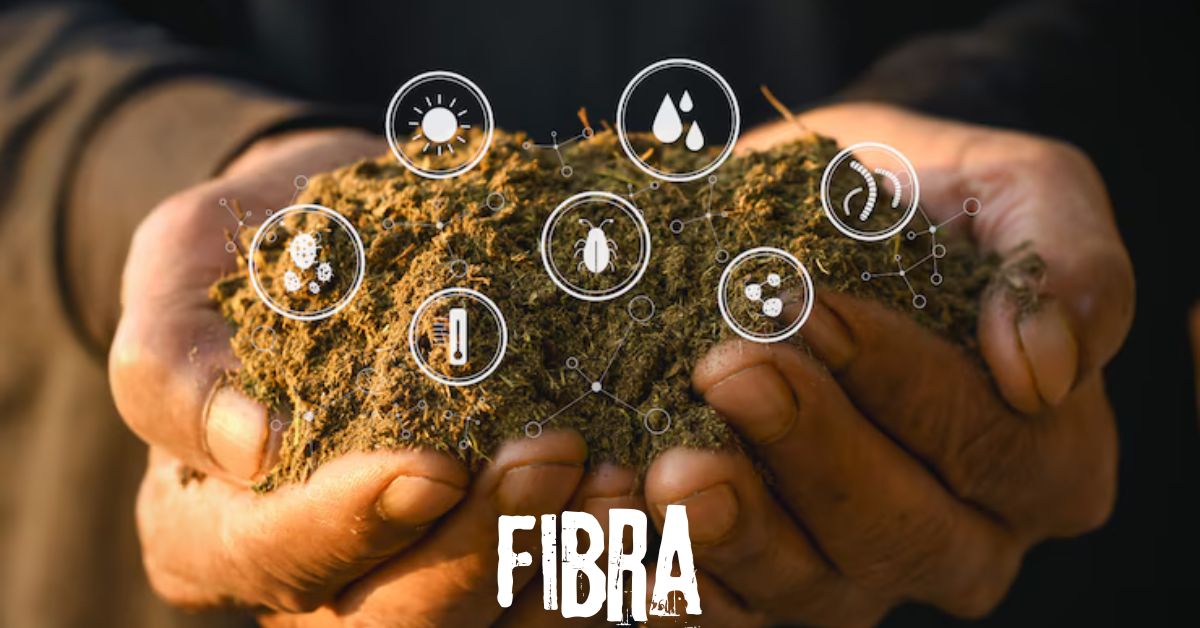In an era where sustainability is paramount, Fibra emerges as a key player in the cultivation and enhancement of sustainable fibre crops. This organization collaborates with farmers, academia, and industry stakeholders to develop fibre crops that not only meet commercial goals but also adhere to environmental standards. Fibra’s mission is to revolutionize the fibre industry by integrating eco-friendly practices with advanced agricultural techniques, ensuring that the production of these fibres contributes positively to the environment.
This article explores the multifaceted role of Fibra in the fibre industry, examining its approach to sustainable agriculture, the types of fibres it cultivates, and the impact it has on both the market and the environment. Through a detailed analysis, we will uncover how Fibra is shaping the future of sustainable fibres.
The Mission and Vision of Fibra
Commitment to Sustainability
Fibra’s mission is to promote sustainability and eco-friendly agricultural practices in response to climate change and environmental degradation. The organization focuses on cultivating fiber crops that require minimal resources, reduce carbon footprints, and contribute to soil health. By working closely with farmers, Fibra ensures these sustainable practices are implemented at the grassroots level.
Collaboration with Academia and Industry
Fibra’s vision extends beyond farming; it encompasses a collaborative approach that brings together academia, industry experts, and farmers. This partnership is crucial in developing innovative techniques for cultivating and processing fibre crops. Academia contributes research and development, while industry stakeholders provide insights into market demands and commercial viability. Together, they form a powerful alliance that drives innovation in sustainable fibre production.
The Importance of Sustainable Fibre Crops
Environmental Impact
Fibre crops, such as cotton, flax, hemp, and jute, are essential raw materials in various industries, including textiles, construction, and packaging. However, traditional methods of cultivating these crops can have detrimental effects on the environment. For instance, cotton farming is notorious for its high water consumption and pesticide use. Fibra addresses these concerns by promoting sustainable practices that minimize water usage, reduce the need for chemical inputs, and enhance biodiversity.
Economic Benefits for Farmers
Sustainable fibre crops offer significant economic benefits for farmers. By adopting sustainable practices, farmers can reduce input costs, such as water and fertilizers, and improve crop yields. Fibra works with farmers to implement these practices, ensuring that they are both economically viable and environmentally responsible. Additionally, the demand for sustainably produced fibres is growing, providing farmers with new market opportunities and potentially higher profits.
Meeting Commercial Goals
The global market for sustainable products is expanding rapidly, and fibre crops are no exception. Consumers are increasingly seeking out products made from eco-friendly materials, driving demand for sustainable fibres. Fibra’s efforts to cultivate and process these fibres ensure that they meet commercial goals while also adhering to environmental standards. This dual focus on sustainability and market viability positions Fibra as a leader in the industry.
Types of Fibre Crops Cultivated by Fibra
Cotton: A Sustainable Approach
Fibra is focusing on sustainable cotton farming practices that reduce water usage, minimize pesticide application, and improve soil health. By partnering with cotton farmers, Fibra ensures these practices are effectively implemented, resulting in high-quality cotton that meets both environmental and commercial standards.
Hemp: A Versatile and Eco-Friendly Fibre
Hemp is gaining popularity as a sustainable alternative to traditional fibre crops. It requires less water and fewer pesticides than cotton, and it has a shorter growth cycle, making it an efficient crop for farmers. Fibra supports the cultivation of hemp by providing farmers with the resources and knowledge needed to grow this versatile crop. In addition to textiles, hemp fibres are used in construction materials, bioplastics, and even as a replacement for synthetic fibres in various products.
Flax: Promoting Biodiversity and Soil Health
Fibra supports flax, a fibre crop for linen production, through sustainable farming practices, promoting biodiversity and reducing soil erosion, resulting in high-quality flax for sustainable textiles.
Jute: A Sustainable Solution for Packaging
Jute is a strong, durable fibre crop commonly used in packaging and textiles. It is biodegradable, making it an excellent alternative to synthetic materials. Fibra promotes the cultivation of jute in regions where it can thrive, providing farmers with the tools and knowledge needed to produce this eco-friendly fibre. The organization’s efforts have led to the increased use of jute in packaging, contributing to a reduction in plastic waste.
Fibra’s Role in Research and Development
Advancing Agricultural Techniques
Research and development (R&D) play a crucial role in Fibra’s mission to promote sustainable fibre crops. The organization collaborates with academic institutions and research centers to develop innovative agricultural techniques that improve crop yields, enhance fibre quality, and reduce environmental impact. These advancements are then shared with farmers, ensuring that they have access to the latest knowledge and technology.
Developing New Fibre Varieties
In addition to improving existing crops, Fibra is involved in the development of new fibre varieties that are more resilient and environmentally friendly. Through selective breeding and genetic research, Fibra is working to create crops that require fewer resources, are more resistant to pests and diseases, and produce higher yields. These new varieties are crucial in meeting the growing demand for sustainable fibres.
Enhancing Processing and Production
The cultivation of fibre crops is only one part of the equation; processing and production are equally important. Fibra is committed to improving the entire supply chain, from farm to finished product. This includes developing more efficient processing techniques that reduce waste, lower energy consumption, and maintain the integrity of the fibres. By optimizing the production process, Fibra ensures that sustainable fibres can compete with conventional options in terms of quality and cost.
The Impact of Fibra on the Environment and Society
Reducing Carbon Footprint
Fibra’s work significantly reduces the carbon footprint of fibre crop production by promoting water, pesticide, and synthetic fertilizer use, and sequestering carbon in soil, contributing to climate change mitigation.
Supporting Rural Communities
Fibra’s work extends beyond environmental sustainability; it also has a profound impact on rural communities. By providing farmers with the tools and knowledge needed to grow sustainable fibre crops, Fibra helps to improve livelihoods and create new economic opportunities. The organization’s commitment to fair trade practices ensures that farmers receive a fair price for their crops, contributing to the overall well-being of rural communities.
Promoting Global Sustainability Goals
Fibra’s efforts align with several of the United Nations Sustainable Development Goals (SDGs), including responsible consumption and production, climate action, and life on land. By promoting sustainable fibre crops, Fibra contributes to the achievement of these global goals, helping to create a more sustainable and equitable world.
Challenges and Opportunities in the Fibre Industry
Overcoming Barriers to Adoption
Despite the clear benefits of sustainable fibre crops, there are still challenges to widespread adoption. These include the upfront costs associated with transitioning to sustainable practices, the need for education and training, and the resistance to change among some farmers and industry stakeholders. Fibra is actively working to overcome these barriers by providing financial incentives, technical support, and education programs that encourage the adoption of sustainable practices.
Expanding Market Demand
As consumer awareness of sustainability grows, so too does the demand for eco-friendly products. This presents a significant opportunity for the fibre industry to expand its market for sustainable fibres. Fibra is at the forefront of this movement, working to increase the visibility and appeal of sustainable fibre products. By partnering with brands and retailers, Fibra is helping to create a market that values sustainability and drives demand for responsibly produced fibres.
Innovating for the Future
Fibra is a leader in the fibre industry, continuously researching and developing new methods and technologies to shape sustainable fibre production. Their focus on innovation ensures they remain a leader in the industry.
Conclusion
Fibra is a leading organization in the fibre industry, collaborating with farmers, academia, and industry stakeholders to cultivate, process, and enhance sustainable fibre crops. Its commitment to sustainability, innovation, and collaboration contributes significantly to the environment, rural communities, and the global market.
Fibra is leading the sustainable fibre crop movement, pushing boundaries in agriculture to create a world in harmony with the environment. As consumers and industries prioritize sustainability, Fibra’s work will become even more critical in shaping a greener, more sustainable future.
FAQs
1. What is Fibra?
Fibra is an organization that collaborates with farmers, academia, and industry to cultivate, process, and enhance sustainable fibre crops. Their focus is on promoting eco-friendly practices that meet both commercial goals and environmental standards.
2. What types of fibre crops does Fibra work with?
Fibra works with various fibre crops, including cotton, hemp, flax, and jute. These crops are cultivated using sustainable practices that reduce environmental impact.
3. How does Fibra contribute to sustainability?
Fibra promotes sustainable farming practices that minimize water usage, reduce chemical inputs, and enhance biodiversity. They also focus on developing new fibre varieties that are more resilient and environmentally friendly.
4. Who does Fibra collaborate with?
Fibra collaborates with farmers, academic institutions, and industry stakeholders to develop innovative sustainable fibre production techniques and ensure their effective implementation.
5. What impact does Fibra have on rural communities?
Fibra supports rural communities by providing farmers with the tools and knowledge needed to grow sustainable fibre crops. This helps improve livelihoods, create new economic opportunities, and ensure fair trade practices.





3 thoughts on “Fibra : Pioneering Sustainable Fibre Crops for a Greener Future”